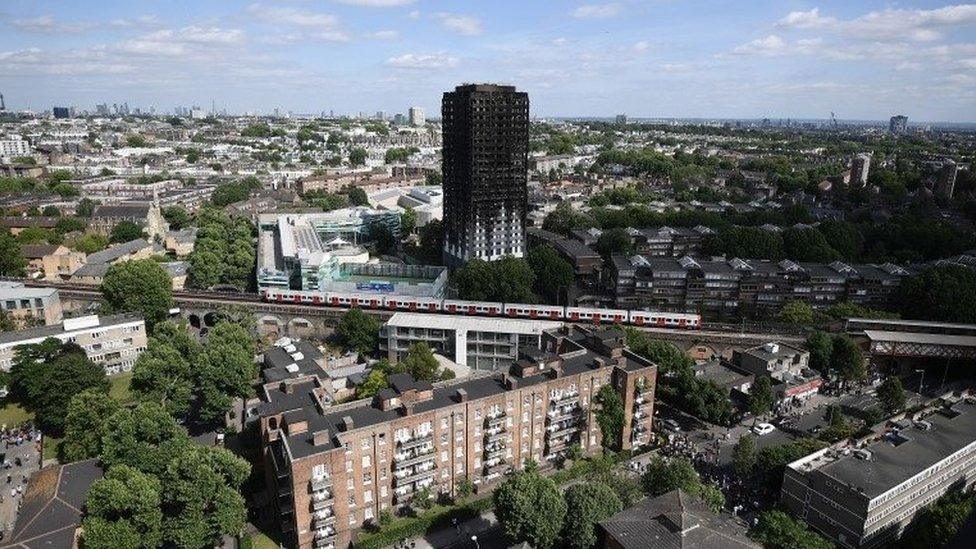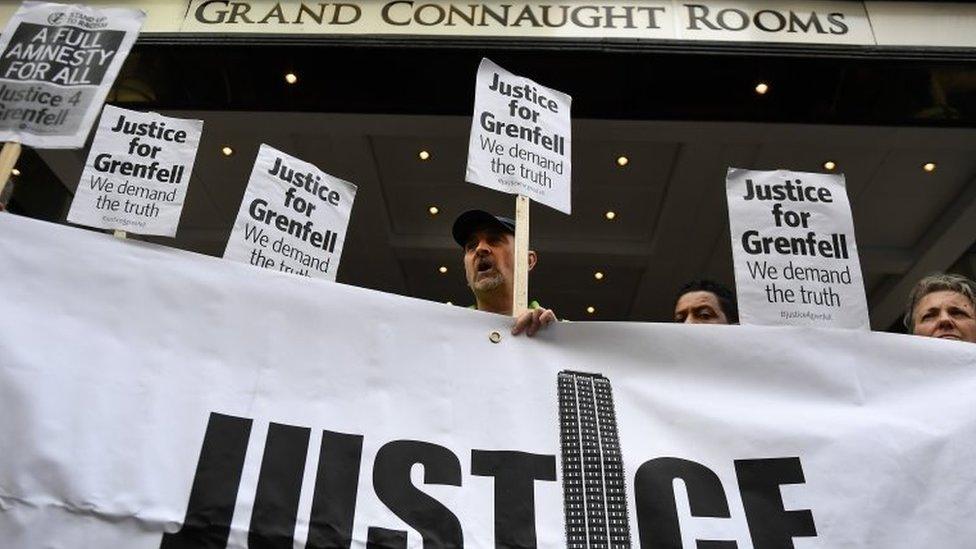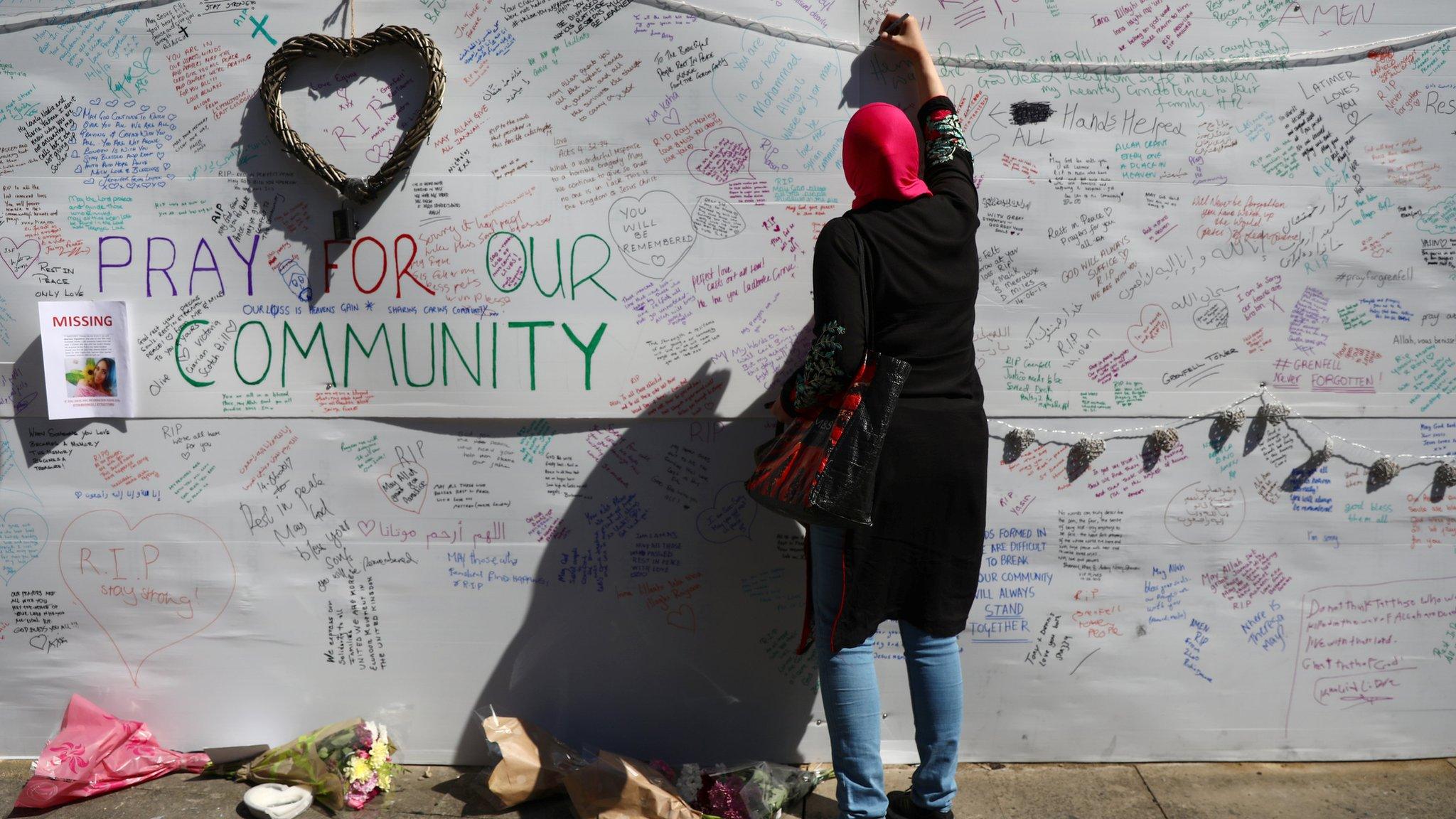Grenfell contractor: Sprinklers would have saved tower
- Published

Paul Atkins also gave evidence to the inquest into the Lakanal House fire, which killed six
A fire safety expert previously contracted to work on Grenfell Tower has said sprinklers would have stopped the fatal fire from spreading.
Paul Atkins said sprinklers give people a "99% chance of survival" and would have stopped flames taking hold.
It comes as a BBC London survey reveals a nationwide rush to retrofit systems has led to demand outstripping supply.
Kensington and Chelsea Council said it would not comment until the public inquiry into the Grenfell fire.
Mr Atkins is director of M&P Fire Protection which maintained the dry riser in Grenfell Tower and the sprinkler systems of surrounding buildings.
He told BBC London: "If they'd had a sprinkler system the fire would have been deluged before it got to the cladding.
"People would've had plenty of time to leave the building.
"To date no-one has ever died in a fire with a sprinkler system in the household, so the proof's in the pudding. You've got a 99% chance of surviving."
Waiting list
Meanwhile a BBC survey has found sprinkler firms across the country are unable to keep pace with landlords' demands for the systems following the Grenfell tragedy.
Of 33 companies interviewed:
Thirty say they have seen a surge in inquiries, with firms providing between 150% and 500% more quotes than normal
Nine have a waiting list of up to two months before considering new jobs
Eight are actively turning away business
At least two London councils, Wandsworth and Croydon, have committed to installing sprinkler systems in all their housing blocks of 10 storeys or higher.
However Croydon Council told the BBC it would be next spring before these works are complete.

Grenfell Tower would never have been built under current regulations, an expert said
Mr Atkins said a sprinkler system could have been installed in Grenfell Tower for between £500,000 and £700,000.
He said: "It's difficult for councils, because they have a budget and they need to keep to it, but if people are living in these places they need to be protected. This can't happen again."
Asked whether he would have allowed family members to live in the building, he said: "No - I wouldn't want anyone to live like that."
However he praised Kensington and Chelsea Council for its general approach to remedial work.
Mr Atkins also surveyed the Lakanal House tower block in south London - where six people subsequently died during a fire in 2009 - and provided a quote to Southwark Council for installing a sprinkler system.
During the inquest into that tragedy he made clear that sprinklers would have helped.
'Stamped on'
Stewart Kidd, a consultant and former director of the Fire Protection Association, said: "Grenfell would not be built now as the fire regulations changed in 2007.
"However regulations are not retrospective which means existing buildings don't have to comply with new standards.
"Sprinklers are the optimum way of compensating."
Of the Grenfell fire, he said: "The flat where the fire started would have been badly damaged by the fire, but it would have been contained.
"It certainly wouldn't have spread to the cladding.
"The Fire Brigade would have arrived to find a small fire that could have been put out with an extinguisher or stamped on."
A Kensington and Chelsea Council spokesman said: "The right forum for these matters to be explored is the public inquiry into the Grenfell Tower fire.
"We are committed to cooperating fully with the inquiry and ensuring our residents get the answers they deserve.
"We want to be open and transparent and look forward to the inquiry getting under way."
Southwark Council has made no comment.
Additional reporting by Omar Khan and Aldo Cetrullo.
- Published21 September 2017

- Published14 September 2017

- Published18 May 2018
